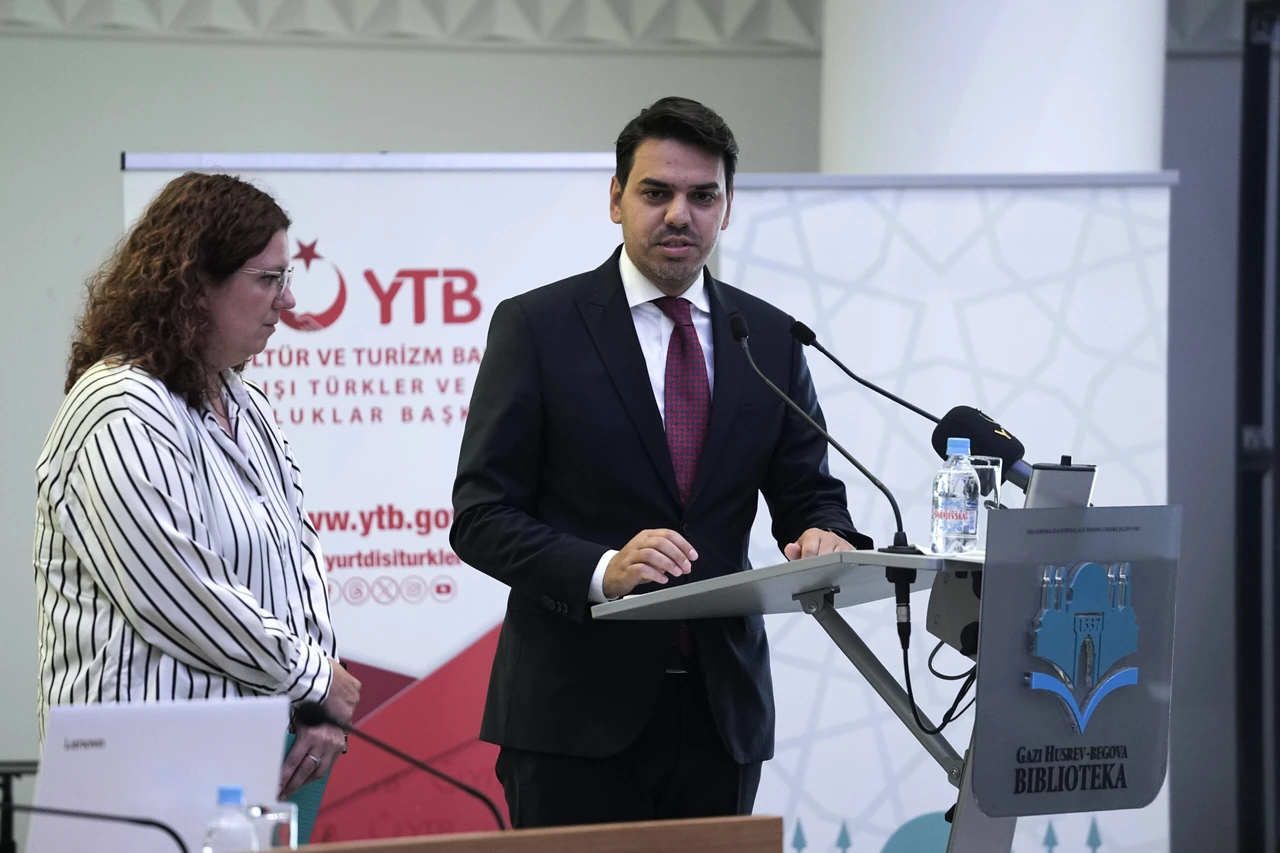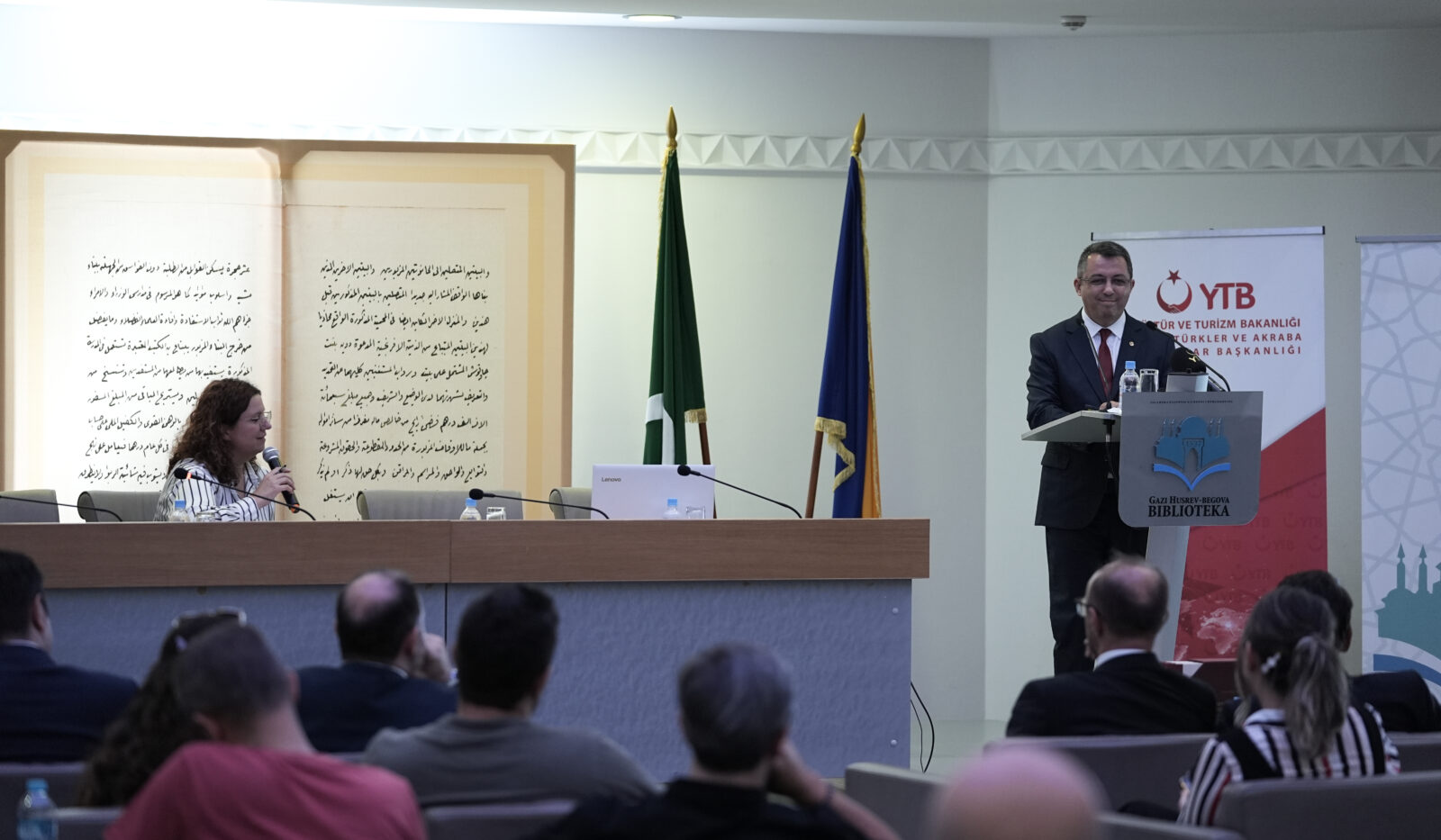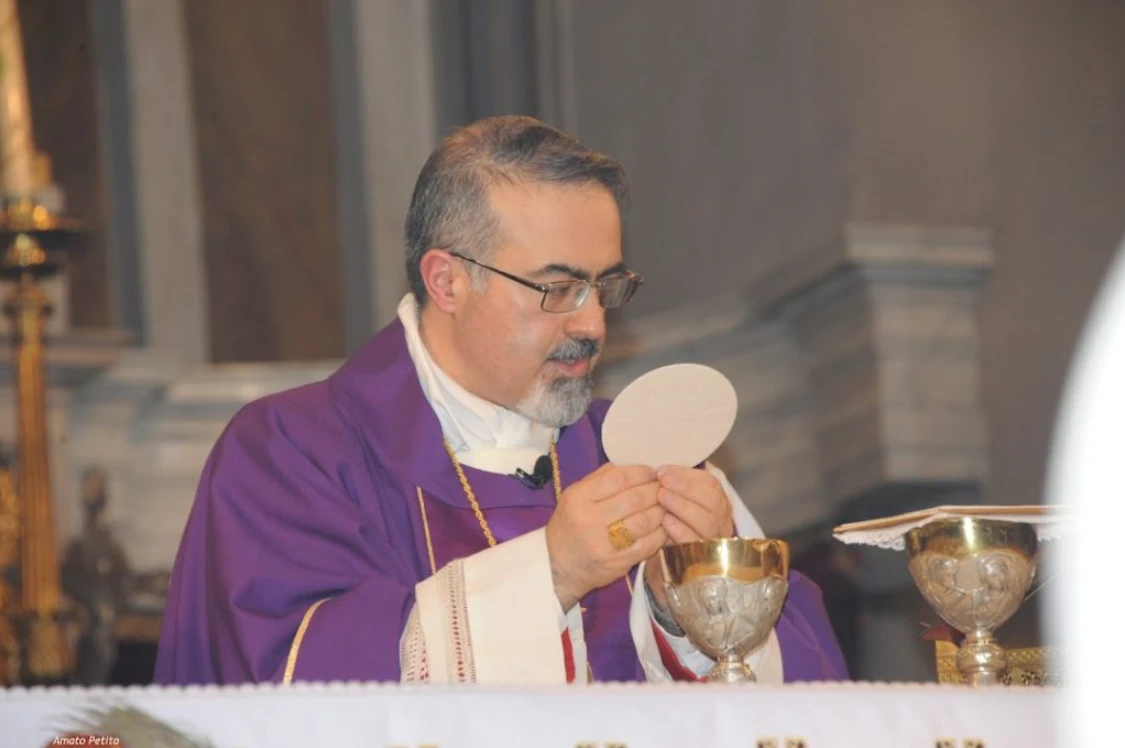New book launched in Bosnia explores Turkish structures converted into churches
 In Sarajevo, the capital of Bosnia and Herzegovina, President of the Presidency for Turks Abroad and Related Communities (YTB), YTB President Abdullah Eren made a speech at the presentation of the book titled “Turkish Monuments Converted into Churches”, which describes the works that were originally Turkish artifacts and later converted into churches in 19 countries, 5 September 2024 (AA Photo)
In Sarajevo, the capital of Bosnia and Herzegovina, President of the Presidency for Turks Abroad and Related Communities (YTB), YTB President Abdullah Eren made a speech at the presentation of the book titled “Turkish Monuments Converted into Churches”, which describes the works that were originally Turkish artifacts and later converted into churches in 19 countries, 5 September 2024 (AA Photo)
A new book, titled “Turkish Monuments Converted into Churches,” was launched in Sarajevo on Friday. The publication explores Turkish-built structures that were later transformed into Christian places of worship across 19 countries.
The event was organized by the Presidency for Turks Abroad and Related Communities (YTB) at the Gazi Husrev-bey Library. YTB President Abdullah Eren, the book’s author and architect Mehmet Emin Yilmaz, and representatives from Turkish institutions and organizations attended the program.
YTB’s commitment to Bosnia-Herzegovina
During the event, YTB President Eren emphasized the organization’s dedication to Bosnia-Herzegovina, particularly in education and cultural projects. He highlighted that over 1,000 students from Bosnia-Herzegovina have received scholarships to study in Türkiye, with 40 more scholarships granted this year. Eren also noted that Turkish studies students are brought to Türkiye for educational programs.
Eren underscored the need for enhanced cooperation in technical fields, particularly in software and computer engineering, where Bosnia-Herzegovina has significant potential that could be aligned with Türkiye’s capabilities.

451 Ottoman-era monuments converted into churches
Eren explained that the featured book documents Ottoman-era structures that were converted into churches across 19 countries. The research, led by architect and historian Mehmet Emin Yilmaz, identified 451 such monuments.
Eren remarked, “These structures were primarily mosques that were later repurposed as churches. We aim to approach this issue with a spirit of tolerance, but the numbers clearly show that far more mosques were converted into churches than the other way around.”
12 years of research: 345 mosques among 451 converted structures
Author Mehmet Emin Yilmaz revealed that his 12-year research project uncovered 451 architectural works originally built by Turks that were later converted into churches. He noted that 345 of these structures were mosques, with the remainder including tombs, dervish lodges and other buildings.
Yilmaz highlighted the significance of “selatin” (imperial) mosques in Ottoman cities across the Balkans. He pointed out that the Eski Mosque in Drama, built by Ottoman Sultan Yildirim Bayezid in the 14th century, is the oldest imperial mosque in the Balkans. However, after the population exchange in 1924, it came under Greek ownership and was converted into a church. Similarly, Yilmaz mentioned the Kara Mosque in Sofia, designed by Mimar Sinan, which was converted into a church in the early 1900s and remains a church to this day.
The book launch event also featured a presentation by Yilmaz, focusing on mosques in the Balkans, which drew significant attention from attendees.



